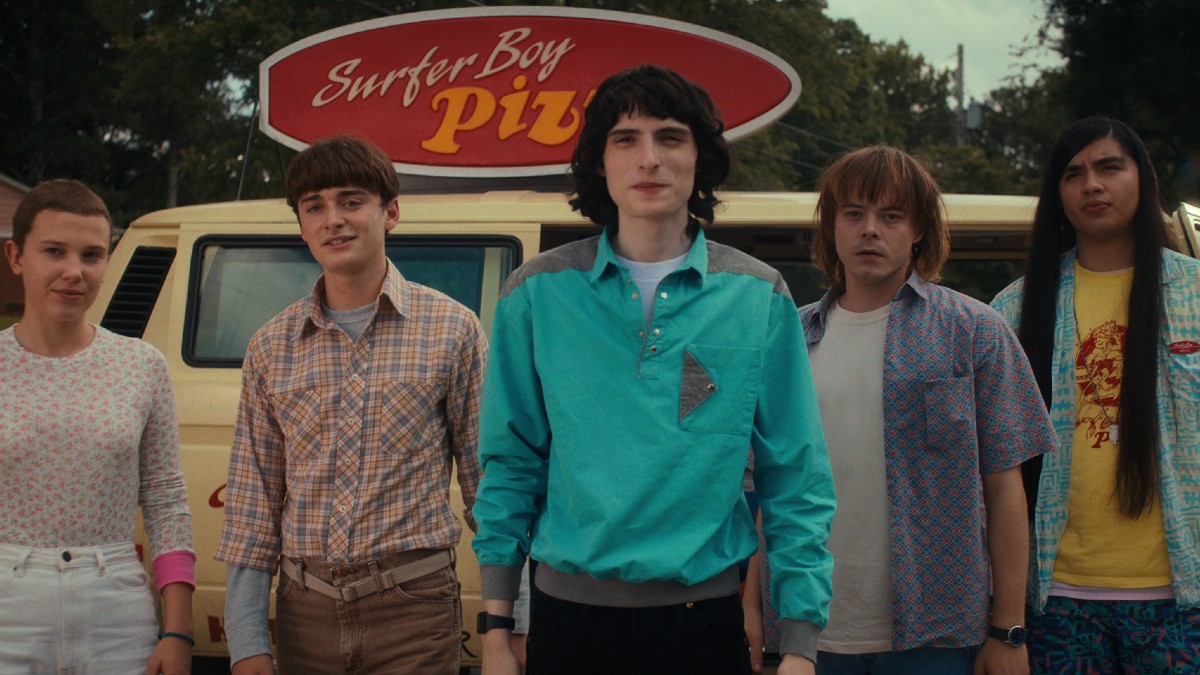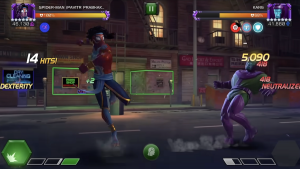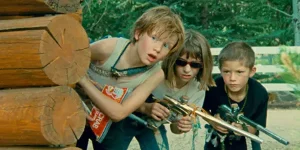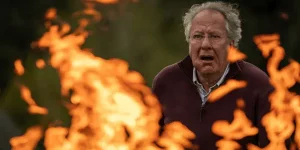
“It’s the 80s, do a lot of coke and vote for Ronald Regan!” That song may be an all-time classic Mystery Science Theater 3000 riff from the Gremlins rip-off Hobgoblins, but one might find themselves also singing that ditty more and more often when watching TV and movies.
Stranger Things, Totally Killer, IT, and even parts of Loki’s second season take us back to the 1980s, filling the screen with neon clothes, Dungeons & Dragons references, and so much punk and synth-pop.
It’s easy to see why the 80s would get attention in the past decade, as kids of that era have grown to be the adults with buying power (such as it is) and control over media franchises. However, 80s nostalgia has become bankrupt even quicker than previous versions, precisely because of its thin and disinterested look at the target decade.
The 1980s are the New 1950s
Some of the all-time best movies were released in the 1980s – The Thing (1982), The Fly (1986), and The Blob (1988) among them. But those were also films released in the 1950s. Even in 1981, remakes were nothing new, and all of those original movies seemed ripe for revision as special effects and censorship standards changed.
The pop-cultural connections between the 1980s and 1950s went further than just remakes. Back to the Future sent Marty McFly from 1985 to 1955, the 1986 Stephen King adaptation Stand By Me took place in 1959, and Dead Poets Society looked at life in a boy’s school in 1959. The 50s weren’t the only decade of concern for 80s movie makers, as Star Wars and Indiana Jones had their roots in adventure serials of the 30s and 40s, and the monumental The Big Chill contrasted the lives of Yuppies to the idealistic 60s and 70s, but it was the Eisenhower era that received the most attention at the time.
Part of the impetus for this look back stemmed from the same phenomenon as 80s nostalgia today. By 1981, Baby Boomers rose to positions of power and influence and wanted to see their youth reflected back to them. And yes, people did do a lot of coke back then. However, the prime mover for the 80s’ own 50s nostalgia may have more to do with the second half of Mike Nelson’s song: voting for Ronald Reagan.
Mourning in America
“It’s morning again in America,” declares a soft, but undeniably authoritative voice at the start of a famous ad for Ronald Reagan’s re-election campaign. Lit with the glow of a rising sun, we see images of a newspaper delivery boy, families carrying goods into a new home, and a couple getting married. After listing the low unemployment and interest rates and higher marriage rates compared to 1980 and before, the voice closes by asking, “Why would we ever want to return to where we were, less than four short years ago?”
Reagan’s eight years in the executive office represented a reaction to what he and other conservatives deemed disruptions of the 60s and 70s. Where those years saw significant changes in the rights of minorities, workers, women, and queer people, conservatives saw the unraveling of the social order. They sought to put things right by heralding a return to the Eisenhower era, a period of economic stability after World War II that saw mass suburbanization, the birth of the nuclear family, and the establishment of capitalism as the country’s sole economic system.
Conservative power players of the 80s, ranging from political figures such as Pat Buchanan and William Rehnquist, to religious leaders like James Dobson and Jerry Falwell, framed the 1980s as a continuation of the 1950s, painting that period as a bright point in American history.
But as the “Morning in America” ad explicitly shows with its pictures of middle-class white people and heterosexual marriage, that was a high point available to only a narrow minority of Americans who enjoyed the success of the 1980s (the rest were to take what “trickled down” to them).
Thus, pop culture became a proving ground to contest the rhetoric of the era. Upon his return to the 1950s in Back to the Future, Marty found his upright father to be a Peeping Tom and his chaste mother to be a typical horny teen. With The Thing, John Carpenter erased the buddy vibes of The Thing from Another World, replacing it with a deep-seated paranoia in which no one can trust anyone. Stand By Me built its innocent boy’s romp around a rotting corpse.
When pop culture of the 80s looked back thirty years, it did so not with longing for a simpler time, but with anger at the lie those in power tried to push.
The Nostalgic Nothings of 80s Throwbacks
Perhaps the most incisive modern look at the era came in the 2012 Lord and Miller movie 21 Jump Street, based on the cop show that ran from 1987 – 1991. When buff officer Jenko (Channing Tatum) gets assigned to go undercover at a high school, he expects to relive his glory days. Instead, Jenko finds that kids of today (well, ten years ago, anyway) reject his bullying bravado, and instead accept his kinder and more intellectual partner Schmidt (Jonah Hill). The joke is clear: the nerds have won and the casual cruelty portrayed in the original 80s series no longer flies.
The recent Amazon film Totally Killer tried to pull a similar trick, in which a time machine sends modern girl Jamie (Kiernan Shipka) back to 1987, the same year a slasher terrorized her mother. The film signals Jamie’s arrival in the 1980s in the most expected way, with the camera panning over girls with crimped hair, guys with popped-collar Member’s Only jackets, and so much acid-washed denim, while Bananarama’s cover of “Venus” bops on the soundtrack.
But the more significant event occurs when Jamie sees a man wearing a shirt that reads “FBI: Federal Booby Inspector.” After waving the man and his girlfriend away, Jamie stops to say, “By the way, your shirt is super problematic.” The confused man walks off and his girlfriend says, “I like your shirt.”
While Totally Killer does allow that Jamie may be a bit of a nag at times, more often than not the movie asks viewers to sympathize with her disgust at her mother’s (played by Olivia Holt as a teen) mean girl bullying or the jock who burps in her face. Even when the film connects these characters to their modern-day counterparts, where the mean kids have grown to become respected adults, Jamie’s generation gets a pass.
Like 21 Jump Street before it, Totally Killer throws back to the 80s to critique the past and avoid talking about the present. In fact, these and other 80s returns become self-congratulatory, patting themselves on the back for achieving progress in just a few short decades.
Even worse are throwbacks that avoid talking about the present by idealizing the past. Stranger Things borrows signifiers from Stephen King books and John Carpenter movies of the time, creating a world in which bullies and a potential nuclear war with Russia existed in the abstract, but were never really dangerous. The fourth season gestures toward the Satanic Panic of the era, in which Dobson and other conservative leaders stoked fears of demonic possession through role-playing games and rock music, but turns it into a moot plot point.
When cheerleader Chrissy (Grace Van Dien) dies, local metal and D&D enthusiast Eddie Munson (Joseph Quinn) becomes the chief suspect. The plot line recalls several Satanic Panic incidents of the 1980s and early 90s, most obviously the trial of the West Memphis 3, but Stranger Things has nothing to say about paranoia now or then. It simply continues the show’s mythology about otherworldly monsters, ignoring real-world monsters of today.
Stranger Things is far from the only work to bury social relevance with backward-looking sentimentality. In Wonder Woman: 1984, Max Lord’s (Pedro Pascal) wishing-stone gambit refers only to the me-era, not to our current period of rampant inequality. The adult versions of Richie Tozer (Bill Hader), Beverly Marsh (Jessica Chastain), and Mike Hanlon (Isaiah Mustafa) in It: Chapter Two still carry the scars of the past, but the homophobia, sexual abuse, and racism that haunted them were things of the 80s. Even Beverly and Eddie Kaspbrak (James Ransone) can tear away from spouses who mirror their cruel parents with relative ease.
At best, modern pop culture misremembers the 80s as a set of cultural signifiers to be repackaged as purchasable kitsch. At worst, it acknowledges things were bad back then only to assure viewers that things are much better now.
Moving Forward Without Looking Back
Surprisingly, the closest thing to a modern-day critique through nostalgia can be found in works that update those stories or genres that were popular in the 1980s. Ready or Not and Rian Johnson‘s projects Glass Onion and Poker Face rage against the upper classes with a slasher and a “whodunit” mystery in the style of Murder She Wrote. The HBO series Watchman addresses white supremacy and police brutality by building on the Cold War comic book classic by Alan Moore and Dave Gibbons. Modern movies like Bottoms and Blockers provide a more accepting and diverse take on the 80s sex comedy.
As good as these examples certainly are, those who set their films and TV shows in the 1980s could do even more by tying modern problems to issues in the past, or by disrupting narratives about a past time that was better. Heck, by showing that we all made a huge mistake by letting Donald Trump rise to popularity, nostalgia works could do something more than recite tropes of the 1980s – they could actually emulate 80s pop culture by critiquing the present through the past.
The post Pop Culture Needs to Ditch 80s Nostalgia appeared first on Den of Geek.






